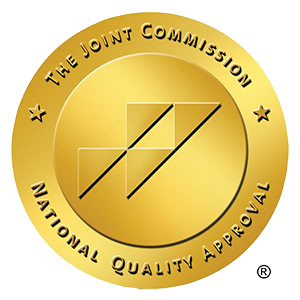Understanding how long it takes to sober up after drinking isn’t just about timing; it’s about recognizing the broader impact alcohol can have on your body and life. Nearly 14.5 million Americans struggle with alcohol use disorder, and the consequences extend far beyond just feeling the effects of a night out. At Surf City Detox in Huntington Beach, California, we know that true recovery starts with education and compassionate care.
Our addiction treatment programs combine safe, medically supervised detox with residential and dual diagnosis care, helping individuals address the root causes of addiction and regain control of their lives. Whether you’re seeking answers for yourself or a loved one, our comprehensive approach ensures you’re supported every step of the way.
Alcohol is a central nervous system depressant that affects the body in various ways. When consumed, it enters the bloodstream and is metabolized primarily by the liver. The rate at which alcohol is processed can vary significantly from person to person. This variability can be attributed to genetic factors, lifestyle choices, and even habitual drinking patterns, all of which can influence how efficiently the body handles alcohol.
How Alcohol is Processed
The liver breaks down alcohol using enzymes, converting it into harmless substances that can be eliminated from the body. On average, the liver can process about one standard drink per hour. However, this rate can be influenced by several factors, including body weight, age, gender, and overall health. For instance, chronic alcohol consumption can lead to liver damage, reducing its ability to metabolize alcohol effectively. Additionally, certain medications can interact with alcohol metabolism, further complicating the process and potentially leading to increased intoxication or adverse effects.
How Long Does it Take to Sober Up?
The time it takes to sober up varies significantly among individuals. On average, it takes about one hour to metabolize one standard drink. However, several factors can influence this timeline, including body weight, age, gender, metabolic rate, and even food in the stomach. For instance, individuals with a higher body mass may metabolize alcohol more efficiently. In comparison, those with a lower body mass may feel the effects more acutely and take longer to sober up.
Standard Drink Definition
A standard drink typically contains about 14 grams of pure alcohol. This is roughly equivalent to:
- 12 ounces of beer (5% alcohol)
- 5 ounces of wine (12% alcohol)
- 1.5 ounces of distilled spirits (40% alcohol)
It’s important to remember that a beverage’s actual alcohol content can vary widely. Craft beers, for example, may have a higher alcohol by volume (ABV) than standard lagers, and some wines can exceed the typical ABV percentages. Therefore, understanding what constitutes a standard drink is crucial for anyone looking to monitor their alcohol consumption accurately.
Example Scenarios
To illustrate how long it may take to sober up, consider the following examples:
- A person weighing 160 pounds consumes four standard drinks over two hours. Their BAC might rise to around 0.08%. It could take approximately four hours for them to sober up completely.
- A person weighing 120 pounds consumes two standard drinks in one hour. Their BAC might reach around 0.05%. They could expect to be sober in about two hours.
Chronic alcohol users may also develop a tolerance that affects their BAC readings and perceived level of intoxication, complicating the process of estimating how long it will take them to sober up. Understanding these nuances can help individuals make more informed decisions regarding their alcohol consumption and safety.
Factors Affecting Sobering Up
Several factors are crucial in determining how quickly a person sobers up. The body’s unique physiological makeup means that even small differences can lead to significant variations in how alcohol is processed.
- Body Weight: Heavier individuals typically have a higher volume of blood and water in their bodies, which can dilute alcohol and lead to a slower rise in blood alcohol concentration (BAC). Conversely, lighter individuals may experience a quicker rise in BAC, making them feel the effects of alcohol more intensely.
- Gender: Women generally have a higher body fat percentage and lower water content than men, which can result in higher BAC levels after consuming the same amount of alcohol. Hormonal fluctuations can also affect how alcohol is metabolized, particularly during menstrual cycles.
- Food Intake: Consuming food before or while drinking can slow the absorption of alcohol, leading to a more gradual increase in BAC. Foods high in protein and fat are particularly effective in this regard, as they can create a barrier in the stomach that slows down the passage of alcohol into the bloodstream.
It’s important to remember that individual metabolic rates can vary widely, influenced by genetic predispositions and lifestyle factors such as exercise and diet. For example, regular physical activity can enhance metabolic processes, potentially leading to more efficient alcohol metabolism.
Additionally, hydration levels play a crucial role; being well-hydrated can help the body process alcohol more effectively, while dehydration can enhance the effects of alcohol and prolong the process of sobering up.
Understanding Blood Alcohol Concentration (BAC)
Legal Limits and Impairment
In many places, the legal limit for driving is a BAC of 0.08%. However, impairment can begin at much lower levels. Even a BAC of 0.02% can affect a person’s ability to drive safely, leading to slower reaction times and impaired judgment. It’s important to note that individual tolerance to alcohol can vary widely based on factors such as body weight, age, and overall health. For instance, a person with a lower body weight may feel the effects of alcohol more acutely than someone who weighs more, even if they consume the same amount of alcohol. This variability is why it’s crucial to be aware of one’s limits and to err on the side of caution when consuming alcohol.
How to Measure BAC
While breathalyzers are commonly used to measure BAC, there are also smartphone apps and devices that can provide estimates. However, these tools may not always be accurate. The most reliable method is a blood test conducted by medical professionals. These tests can give a precise measurement of BAC, but they are typically only performed in situations such as accidents or legal investigations. Additionally, it’s worth mentioning that factors like the type of alcohol consumed, the rate of consumption, and whether food has been eaten can all influence BAC levels.
Tips for Sobering Up Faster
While time is the only true way to sober up, certain strategies can help individuals feel more alert and reduce the effects of alcohol.
Stay Hydrated
Drinking water can help combat dehydration caused by alcohol. Staying hydrated may alleviate some symptoms of a hangover and help the body process alcohol more efficiently.
Consume Food
Eating can slow the absorption of alcohol, but it won’t speed up the metabolism of alcohol already in the bloodstream. However, consuming food can help stabilize blood sugar levels, which may improve overall well-being.
Rest and Sleep
Getting adequate rest is crucial for recovery. Sleep allows the body to heal and can help alleviate hangover symptoms. While it won’t speed up the sobering process, it can make the experience more manageable.
Signs of Intoxication
Recognizing the signs of intoxication is essential for personal safety and the safety of others. Common signs include:
Physical Signs
Physical symptoms of intoxication may include slurred speech, unsteady movements, and impaired coordination. These signs indicate that a person’s BAC is likely elevated.
Behavioral Changes
Alcohol can also cause changes in behavior, such as increased aggression, lowered inhibitions, or excessive friendliness. Being aware of these changes can help individuals assess their level of intoxication.
When to Seek Help
In some cases, alcohol consumption can lead to dangerous situations. Knowing when to seek help is crucial for safety.
Signs of Alcohol Poisoning
Alcohol poisoning is a severe and potentially life-threatening condition. Signs include confusion, vomiting, seizures, slow or irregular breathing, and hypothermia. If someone exhibits these symptoms, it is vital to call emergency services immediately.

Treatment for Alcohol Use Disorder and Related Issues
At Surf City Detox, we understand that alcohol use disorder rarely exists in isolation. Many individuals battling addiction also face underlying mental health challenges such as anxiety, depression, or trauma. That’s why our approach to alcohol addiction treatment goes beyond the surface, addressing the core issues that fuel addiction while providing the tools needed for lasting recovery.
Detox and Residential Treatment

Dual Diagnosis Treatment
This dual diagnosis care is tailored to meet your unique needs, helping you build a solid foundation for long-term wellness.
What sets us apart is not only our specialized programs but also our serene Huntington Beach location, just moments from the calming Pacific Ocean. This healing backdrop creates the perfect setting for self-reflection, growth, and renewal. Coupled with our compassionate and professional team, Surf City Detox offers a truly holistic experience to help you overcome alcohol use disorder and related issues.

Ready to Embrace a Sober Life?
If you’re seeking to turn the page and start a new chapter in your journey towards sobriety, Surf City Detox is here to guide you every step of the way. Our dedicated team provides expert care for drug and alcohol addiction, offering a nurturing environment where you can heal and grow. Don’t let addiction define your life any longer. Contact us today and reclaim the vibrant, fulfilling future you deserve.



